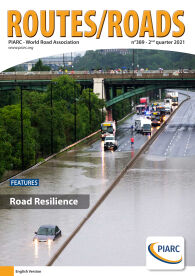Features
Enhancing Resilience of Tunnels With the Integration of Monitoring Data into the BIM Platform
In recent years, infrastructure monitoring has benefited greatly from rapid advances in sensor and data processing technology, as well as from advances emanating from sophisticated computer aided construction management tools (BIM). Such advances have made it possible to install extensive monitoring systems on critical infrastructure segments such as road tunnels and to obtain vast amounts of quantitative data. These recent technological developments have given the civil engineering profession new opportunities to better understand and assess the behaviour of the complex and valuable structures that serve us all. As a result, the 21st century civil engineer will likely need to be not only an expert in the mechanics that underpin the physical behaviour of infrastructure, but also able to understand the functioning of the communications and sensing technologies that constantly measure infrastructure performance. The monitoring data collection phase itself is becoming increasingly automated and data is being provided at high frequency on demand, enabling ever faster and more effective interventions. Illustration 1 graphically depicts this fatigue assessment loop with its basic and key segments.



